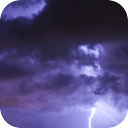(short preview of full seamless looping track)
(short preview of full seamless looping track)
(short preview of full seamless looping track)
(short preview of full seamless looping track)
(short preview of full seamless looping track)
Thunder And Heavy Rain
This product is not available in the selected currency.
In Stock
Backordered
Out of Stock
Description
The dark sky splits heaven and earth in an endless expanse of darkness, blocking out the moon and stars, and saving all that light for moments of brightness that flash out with the intensity of the sun. You sit beneath the protection of your porch, counting the seconds between rolling thunder and wishing that the raindrops could carry you downstream to a new place where the God in the sky did not make such a fuss. The cause of thunder has been the subject of centuries of speculation and scientific inquiry. The first recorded theory is attributed to the Greek philosopher Aristotle in the third century BC, and an early speculation was that it was caused by the collision of clouds. Subsequently, numerous other theories have been proposed. By the mid-19th century, the accepted theory was that lightning produced a vacuum. In the 20th century a consensus evolved that thunder must begin with a shock wave in the air due to the sudden thermal expansion of the plasma in the lightning channel. The temperature inside the lightning channel, measured by spectral analysis, varies during its 50 μs existence, rising sharply from an initial temperature of about 20,000 K to about 30,000 K, then dropping away gradually to about 10,000 K. The average is about 20,400 K (20,100 °C; 36,300 °F). This heating causes it to expand outward, plowing into the surrounding cooler air at a speed faster than sound would travel in that cooler air. The outward-moving pulse that results is a shock wave, similar in principle to the shock wave formed by an explosion, or at the front of a supersonic aircraft.
This sound uses the following file from Freesound: http://www.freesound.org/samplesViewSingle.php?id=127134
Opps
Sorry, it looks like some products are not available in selected quantity.



